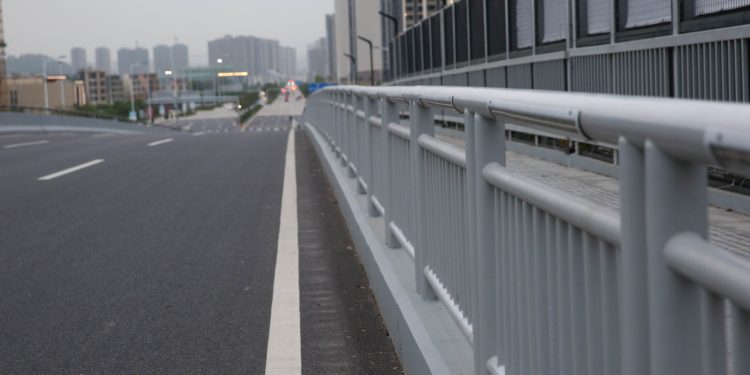Urban safety is a critical concern in city planning, particularly with the increasing population density and the corresponding rise in vehicular and pedestrian traffic. One of the essential elements in ensuring pedestrian safety is the implementation of pedestrian guardrails. These structures play a vital role in protecting pedestrians from vehicular accidents, guiding foot traffic, and enhancing the overall safety of urban environments. This article explores the various aspects of pedestrian guardrails, their importance, and how adhering to pedestrian guardrail standard detail can significantly enhance urban safety.
The Importance of Pedestrian Guardrails
Pedestrian guardrails serve several critical functions in urban environments:
- Protection from Traffic: Guardrails create a physical barrier between pedestrians and vehicles, reducing the risk of accidents and injuries. They are particularly effective in areas with high traffic volumes and speeds.
- Guidance and Control: Guardrails help direct pedestrian movement, ensuring that they use designated crossing points and stay within safe zones. This is essential in busy intersections and along roadways with limited visibility.
- Enhanced Visibility: Guardrails can improve the visibility of pedestrians to drivers, especially at night or in adverse weather conditions. Reflective materials and strategic placement enhance this effect.
- Aesthetic and Functional Design: Modern guardrails are designed to blend with the urban landscape, providing safety without compromising the aesthetic appeal of the area. They can be customized to match the architectural style and cultural context of the location.
Types of Pedestrian Guardrails
There are various types of pedestrian guardrails, each designed to meet specific safety and aesthetic needs:
- Standard Pedestrian Guardrails: These are the most common type, featuring vertical bars or panels that provide a robust barrier. They are often used in high-traffic areas and along busy roads.
- Ornamental Guardrails: These guardrails are designed with aesthetic considerations in mind, incorporating decorative elements that enhance the visual appeal of the area while providing safety.
- Temporary Guardrails: Used in construction zones or during special events, these guardrails are portable and can be easily installed and removed as needed.
- Bollards: Although not traditional guardrails, bollards serve a similar function by creating a physical barrier. They are often used in combination with guardrails for added protection.
- Crash Barriers: These heavy-duty barriers are designed to withstand vehicle impact, providing maximum protection in high-risk areas.
How to Choose the Right Type of Guardrail
Selecting the appropriate guardrail involves several considerations to ensure it meets the specific needs of the location. Here are key factors to consider:
- Location and Traffic Conditions: Assess the traffic volume and speed in the area where the guardrail will be installed. High-speed or high-traffic areas may require more robust guardrails, such as crash barriers, while lower traffic zones may be adequately served by standard or ornamental guardrails.
- Pedestrian Flow: Consider the number of pedestrians using the area. High pedestrian traffic areas need guardrails that can handle frequent use and provide clear guidance to prevent congestion and ensure safety.
- Aesthetic Considerations: Choose guardrails that complement the surrounding architecture and urban design. Ornamental guardrails are ideal for areas where visual appeal is important, such as parks, historical districts, and downtown areas.
- Durability and Maintenance: Evaluate the materials used in the guardrails. Stainless steel, galvanized steel, and other durable materials are ideal for long-term use and require minimal maintenance. Temporary guardrails should be sturdy yet easy to install and remove.
- Regulatory Compliance: Ensure that the chosen guardrails comply with local safety regulations and standards. This includes height, spacing, and strength requirements to provide adequate protection.
- Cost: Budget considerations are always important. Balance the need for safety and durability with the available budget. In some cases, investing in higher-quality guardrails can lead to cost savings in the long run due to reduced maintenance and longer lifespan.
Case Studies: Successful Implementation of Pedestrian Guardrails
- New York City, USA: In response to increasing pedestrian accidents, NYC implemented a comprehensive pedestrian safety plan that included the installation of pedestrian guardrails at key intersections and high-traffic areas. The guardrails not only reduced accidents but also improved traffic flow and pedestrian compliance with crossing regulations.
- Tokyo, Japan: Known for its bustling streets and high pedestrian density, Tokyo has effectively used ornamental guardrails to enhance safety without compromising the city’s aesthetic appeal. These guardrails guide pedestrian movement and protect them from vehicles, particularly in busy districts like Shibuya and Shinjuku.
- London, UK: London has incorporated pedestrian guardrails in its Vision Zero initiative to eliminate traffic deaths and serious injuries. The guardrails, combined with other safety measures like better lighting and clear signage, have significantly improved pedestrian safety in high-risk areas.
Conclusion
Pedestrian guardrails play a vital role in enhancing urban safety by protecting pedestrians from vehicular traffic, guiding their movement, and improving overall visibility. When choosing the right type of guardrail, it is essential to consider factors such as location, traffic conditions, pedestrian flow, aesthetics, durability, regulatory compliance, and cost. By carefully selecting and implementing pedestrian guardrails, cities can create safer and more welcoming environments for their residents and visitors.













































































